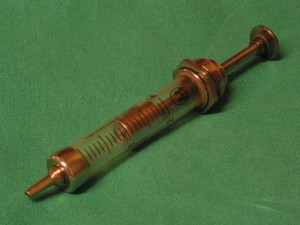 Professional and recreational drug users alike utilise a number of different routes of administration when ingesting their drugs, which allows them to affect certain variables of a drug’s resulting experience: things like the bioavailability (how much of a drug will be absorbed), onset, duration and dose required. This is often a trade-off, as different ROAs come with different advantages and disadvantages; 2c-b for example has quite an unpredictable onset time taken orally, while nasally the onset is very predictable at the cost of being legendarily painful.
Professional and recreational drug users alike utilise a number of different routes of administration when ingesting their drugs, which allows them to affect certain variables of a drug’s resulting experience: things like the bioavailability (how much of a drug will be absorbed), onset, duration and dose required. This is often a trade-off, as different ROAs come with different advantages and disadvantages; 2c-b for example has quite an unpredictable onset time taken orally, while nasally the onset is very predictable at the cost of being legendarily painful.
One route of administration which is gaining popularity in the modern drug scene, but remains with some stigma and a lot of misinformation, is that of rectal administration or “plugging” – medically this can take a few forms, though in the context of recreational drug use this is usually the insertion of a drug solution into the rectal cavity, where the mucous membrane will allow blood vessels to absorb the drug directly – also known as an enema. Continue reading Introduction to Plugging

 Depressants (including alcohol, opioids, benzodiazepines, dissociatives and others) are the most widely used class of recreational drug in the world. Yet, despite and perhaps due to their relative ubiquity, their dangers are often not well known and respected by users. As a result of this, depressants and combinations of depressants are the most common cause of drug-related deaths.[1][2][4][6] Here we discuss the dangers of depressant use, and explain why they are heavily compounded when used in combination with each other, and thus why such mixes should almost always be avoided.
Depressants (including alcohol, opioids, benzodiazepines, dissociatives and others) are the most widely used class of recreational drug in the world. Yet, despite and perhaps due to their relative ubiquity, their dangers are often not well known and respected by users. As a result of this, depressants and combinations of depressants are the most common cause of drug-related deaths.[1][2][4][6] Here we discuss the dangers of depressant use, and explain why they are heavily compounded when used in combination with each other, and thus why such mixes should almost always be avoided.